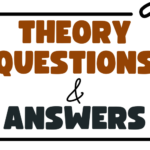The first step in creating a lesson plan is to identify your objectives. This can be anything from learning about animals in the rainforest to solving an algebraic equation. Then, you should describe each activity in your lesson plan. Indicators of skill are an effective way to measure how well your students understand the material.
Indicators of skill are a great way to measure students’ understanding of a topic
Using indicators of skill is a valuable way to assess the level of students’ understanding of a topic. These tools allow you to gauge the level of knowledge students possess about a topic by asking them to rate their level of understanding after completing a course. In addition to using assessments during class, these tools also allow you to assess how much students have understood about a topic on their own.
Indicators of skill are useful because they help to establish the learning goals for students. They are particularly useful at the beginning of a piece of work. For example, you can ask students open questions to gauge their understanding of a topic. Such questions can help to ensure that students are not relying too much on technical terms and do not have a deep understanding of the subject. Additionally, nontechnical questions can help students from diverse backgrounds gain a better understanding of a topic.
List course standards and certification items on lesson plan
The first step of any lesson plan should be to list course standards and certification items. These should be clearly identified in the lesson plan and arranged in a logical order. If a certification exam is required, it will also be helpful to list this information on the lesson plan. This will help the teacher focus on the end goal of the lesson.
After listing the standards and certification items, you must reflect on the lesson plan to ensure it meets the needs of your students. Each student has different needs, learning styles, physical abilities, and English language proficiency. As such, it is imperative to provide support for those students who struggle to reach certain objectives. In addition, you should reflect on your lessons as soon as possible after teaching. You should use prompts to guide your reflection, be thorough, and use specific examples to support your insights.
Describe each activity in the lesson plan
As a teacher, you are responsible for developing a lesson plan that is effective and useful for your students. The plan should clearly state the objectives of the lesson and the materials that will be used to teach it. It should also describe each activity and its intended role in the learning process. You should also take into account the time frame for the lesson.
The content for each activity should be based on the standards or curriculum you have adopted. You can also use a topic that is part of a community resource or expectation in the local area.
Set learning objectives
When filling out your lesson plan, start by identifying the learning objectives for the lesson. These goals should be challenging but also realistic. Then, determine what resources and tools will be necessary to carry out the lesson. You can also include technology tools such as educational websites and apps. Listed below are some helpful tips to help you create an effective lesson plan.
When setting learning objectives, make sure they are appropriate for the subject area and grade level you’re teaching. To do so, you must know the relevant standards, benchmarks, and supporting knowledge for the class. The Common Core State Standards can be an excellent resource for this information. Also, make sure the objectives are time-bound. In other words, you should write down when you expect the students to demonstrate a skill or master a certain concept.
Include homework assignments
If you want to ensure your students are learning, you must include homework assignments in your lesson plan. Homework assignments can include matching terms and their definitions, reviewing flashcards with important facts and terms, and completing written reports based on the topic. You should also include assessments methods that will help you gauge the students’ understanding of the materials and the lesson plan. For example, you can use multiple-choice questions that have four possible answer choices, or group projects, which require students to work together to complete a project.
A successful lesson plan should include goals that will motivate the students to participate. These goals should reflect overall course goals as well as the specific goal for the current assignment. These goals should be prioritized and merged into a logical plan.





